At last. Against all odds (see previous post), we were standing on the site where the Eleusinian Mysteries were performed. Like good little tourists, we decided to hike straight up to the Site Museum and get oriented and then come down and go over the ruins. This was not to be.
First we were attracted to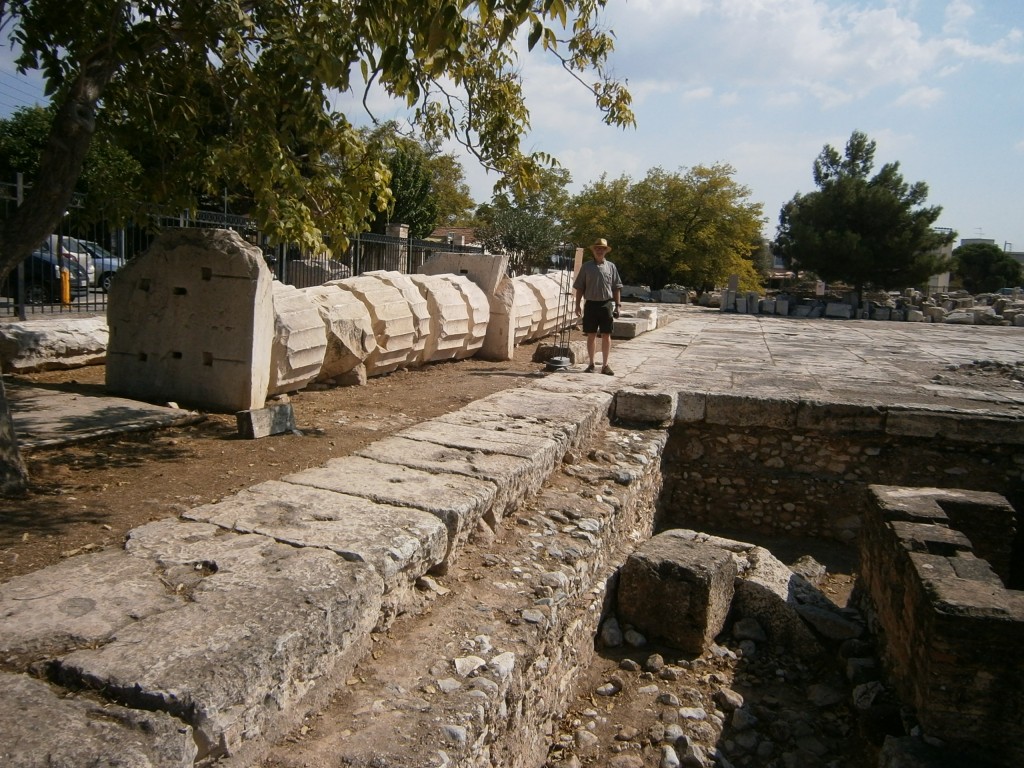 the remains of what had once been a stoa, a long Greek porch, where pilgrims probably rested after their long walk from Athens.
the remains of what had once been a stoa, a long Greek porch, where pilgrims probably rested after their long walk from Athens.
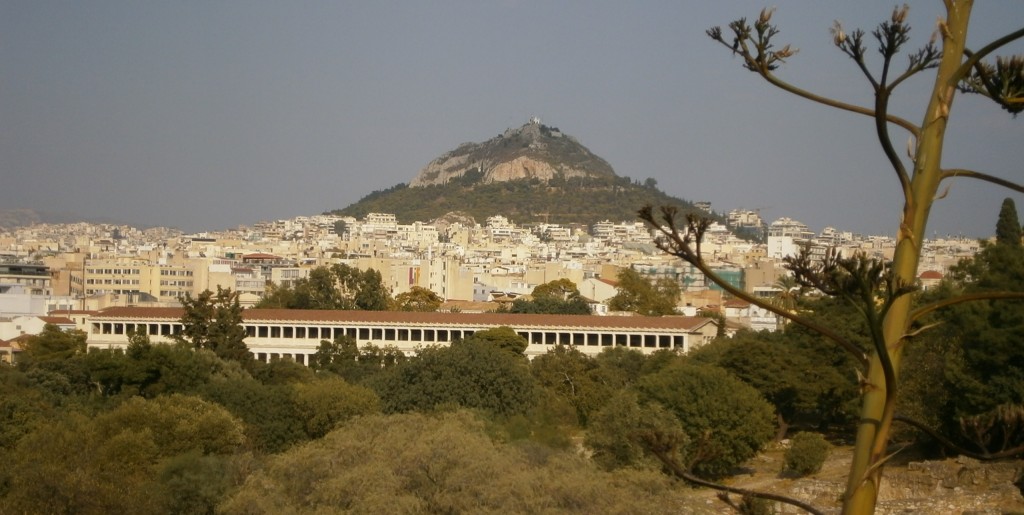
Then, as we headed for a huge set of steps that were on the way to the museum we were drawn to their lower left-hand corner.
The source of the attraction was a Demeter Well.
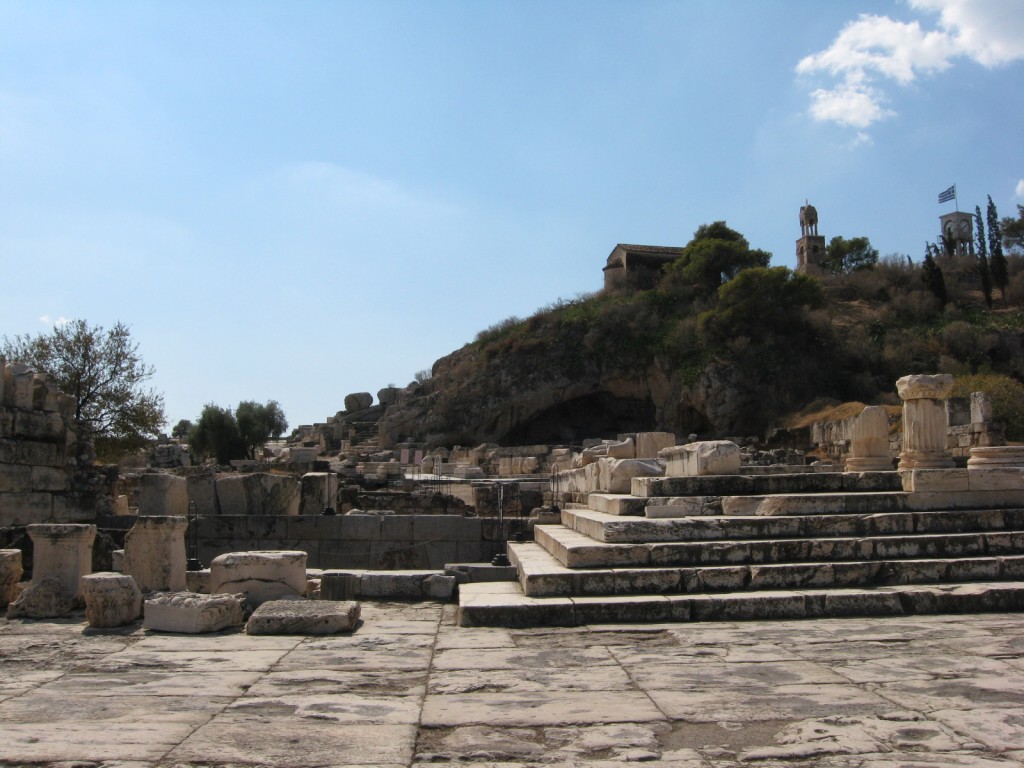
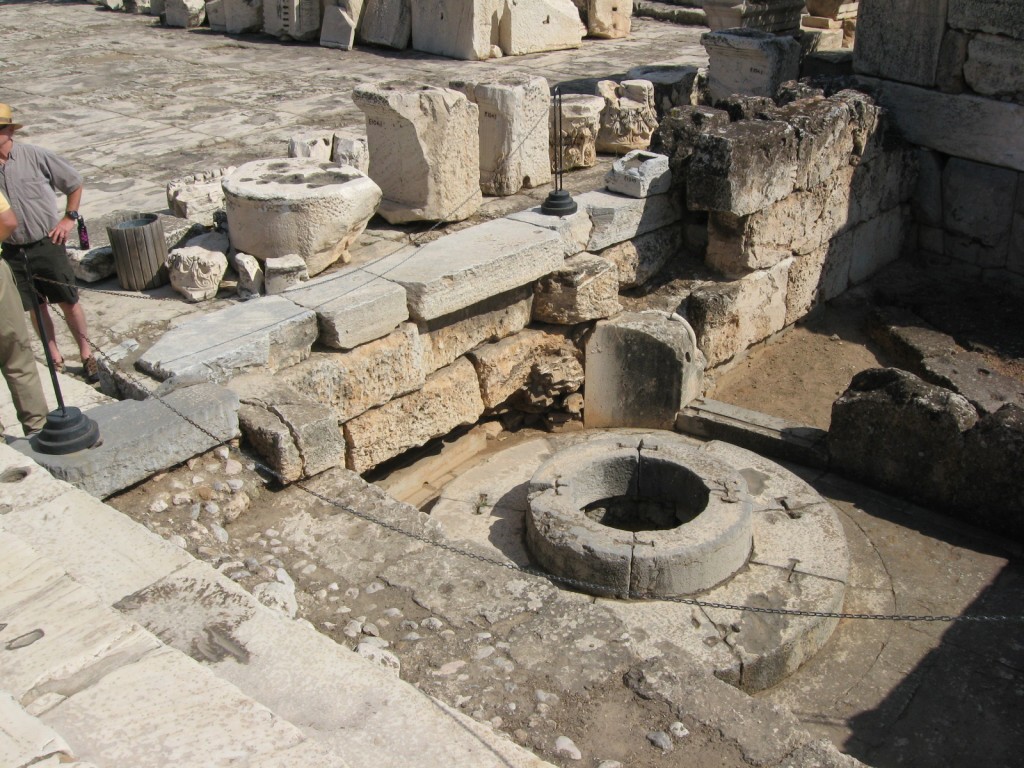
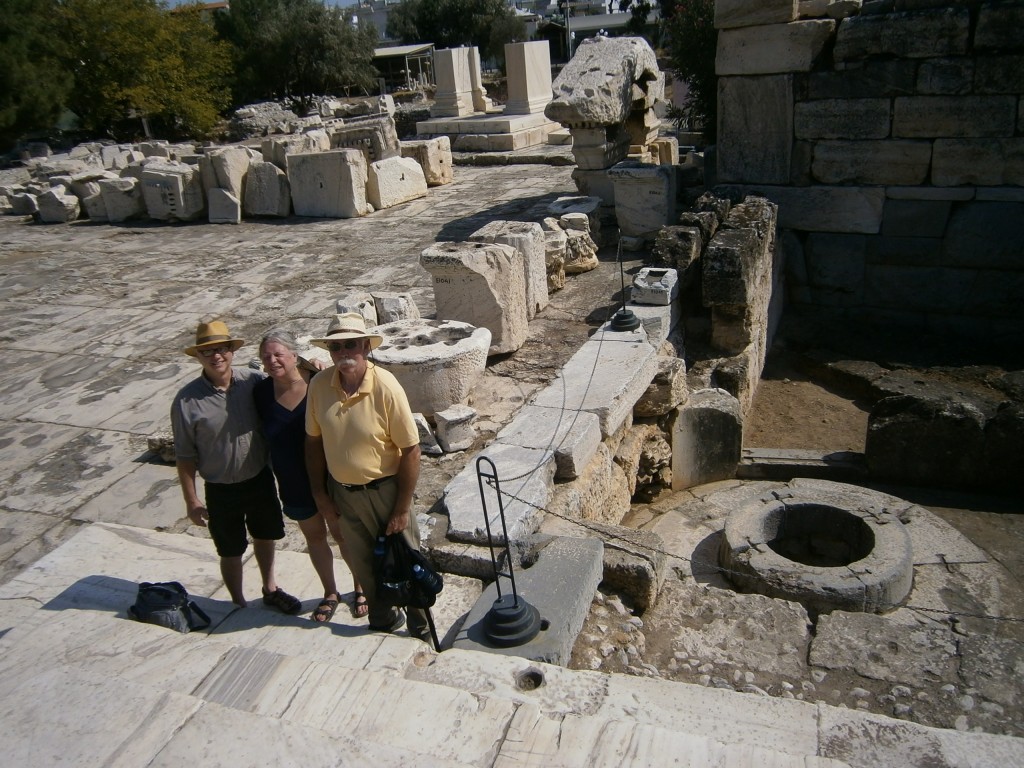
I had seen these before in Sicily at Agrigento and a particularly powerful one at the Rock of Ceres (the Roman Demeter) in the central town of Enna. The Rock of Ceres is another well-situated site. It overlooks the Goddess’s wheat fields and the place where the Sicilians say Hades nabbed her daughter, Persephone.
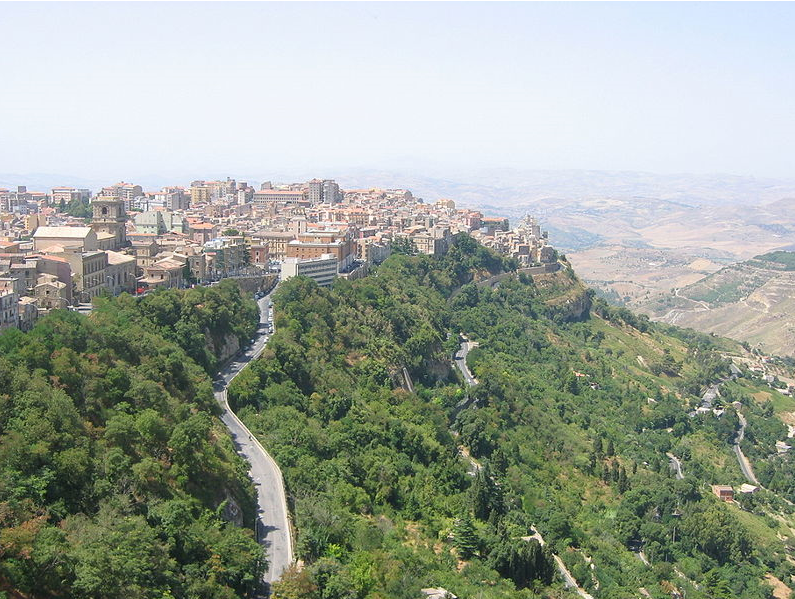
The wells were built by the early chthonic (underworld) cult of Demeter. As far as I’ve been able to guess, they serve the same purpose as any other temple—they provide a link to the deity worshiped there. That was certainly the case here. Power surged out of that innocent looking hole and wrapped around me–grounding, soothing, and thrilling. I understood why they had it roped off. The urge to get closer was nearly irresistible. It didn’t surprise me in the least when a sign next to the well informed me that this was the point around which the entire site had been built.
And then I thought, Well duh! Of course there’s a Demeter Well here. The Eleusinian Mysteries were all about the myth of Demeter and her daughter Persephone, and how Persephone’s Uncle Hades, the dark lord of the underworld, blasted out of the earth in his fiery chariot pulled by two ebony stallions, scooped her up,
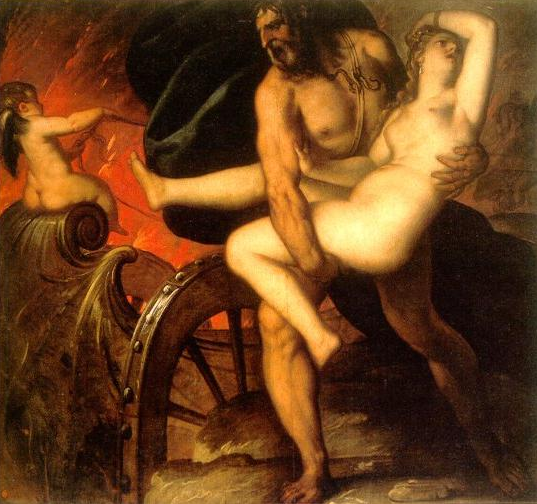
and made her queen of the underworld.
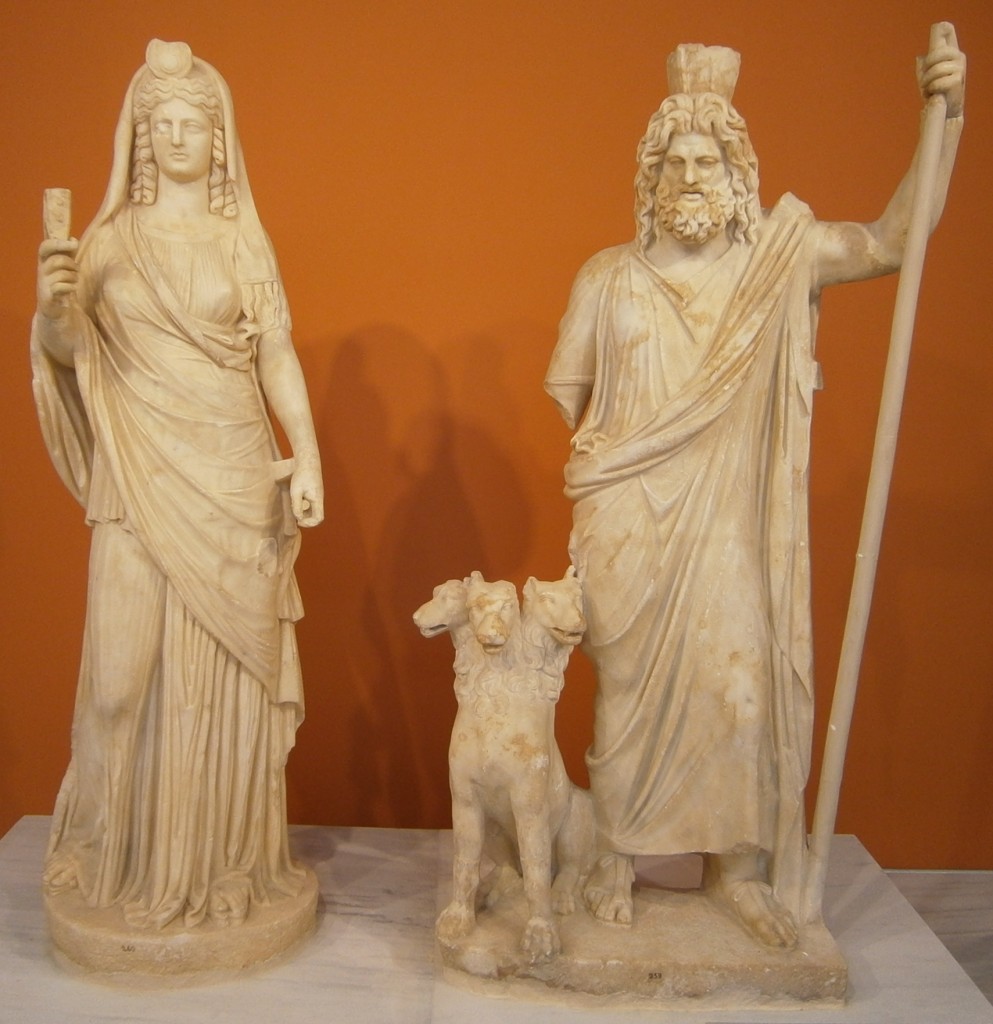
Demeter searched the world over for her daughter and finally came to Eleusina, the ancient town over which modern Elefsina was built.
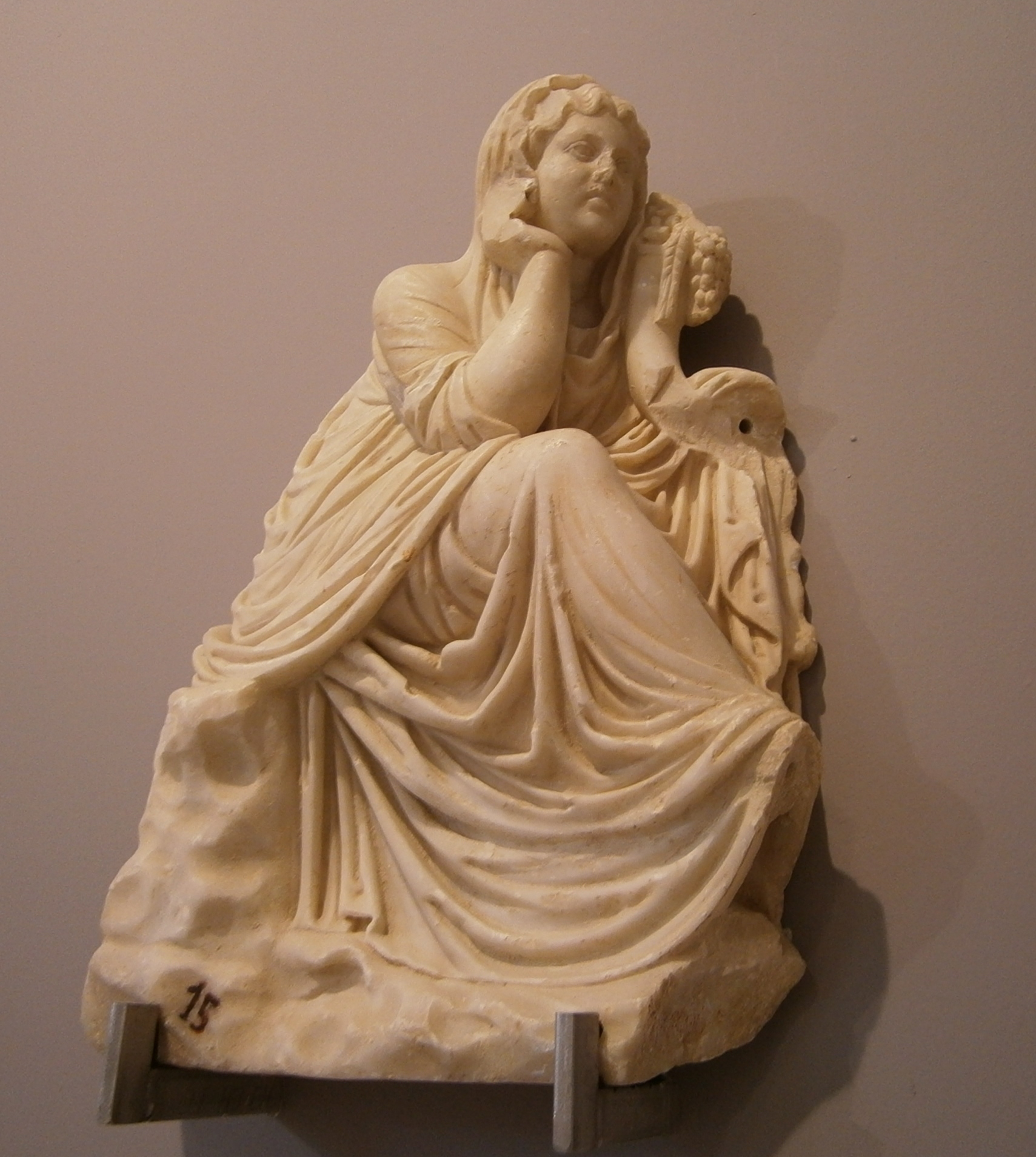
Knossos, 1st-2nd century CE
She sat by the well, disguised as an old, decrepit woman, and was given comfort by the daughters of King Celeus. They took her home and their mother gave the disguised goddess her infant son, Triptolemus, to care for. But when the queen found the old woman holding him over the flames in the midst of a ritual that would have made him immortal, she, of course, went ballistic and snatched her baby out of the fire. Demeter scolded the queen and revealed herself in all her glory. King Celeus was so awed that he built a fabulous temple for her in which her most sacred rituals were performed.
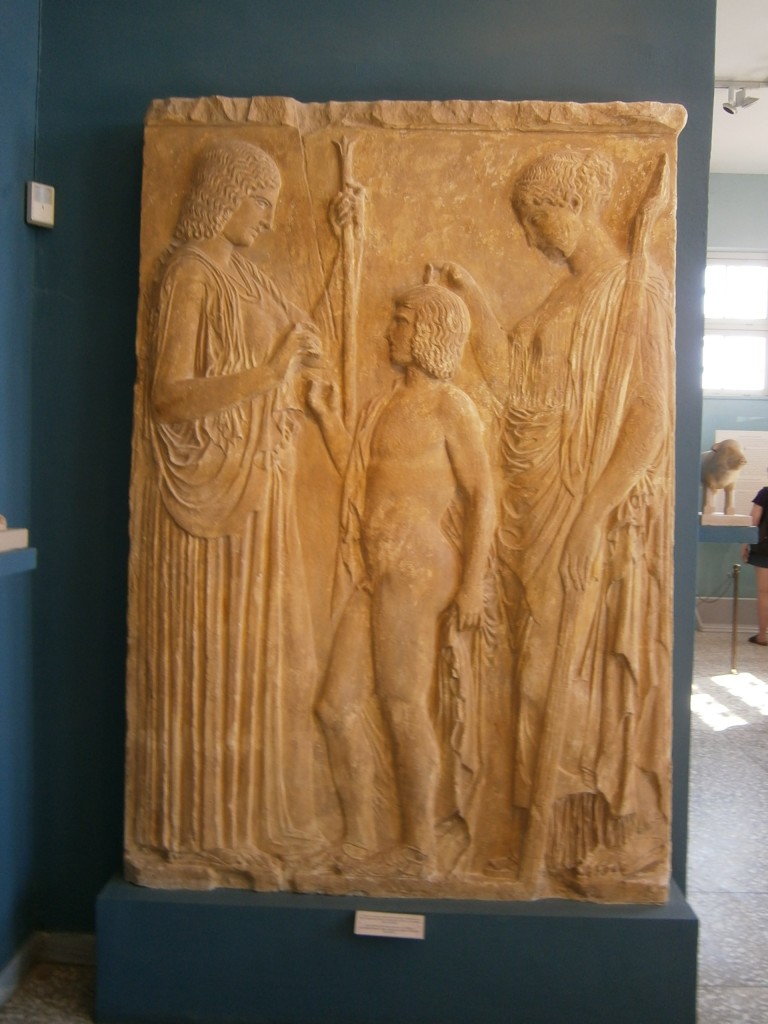
Seeing the Demeter Well at the site of the Eleusinian Mysteries was an electrifying reminder that from 400BCE until 200CE the Greek religion, and specifically the cult of Demeter, was a powerful, inspiring force in all the lands around the Mediterranean Sea.
To be continued…


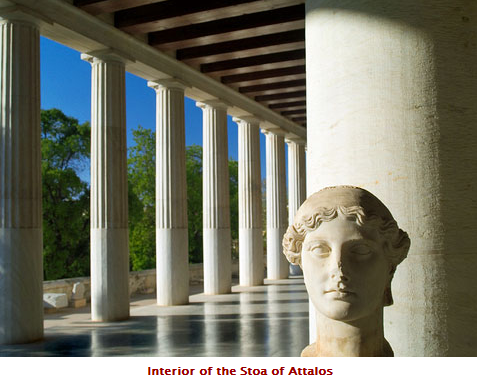
2 thoughts on “Power Points of Eleusius: The Demeter Well”
It is interesting to me that the sacred can be minimized by some, and forgotten, yet those who know can feel the sacred energy still.
I wonder if the Greeks fail to know their own roots as the Middle East residents fail to know about Inanna.
It is absolutely wonderful to travel with you to these spots. so much thanks for your going and for your feeling the sacred, and for then sharing it with us. Many blessings….
The sacred constantly surrounds us and washes through us, and we seldom notice it as we rush through our daily routines. But it’s a bit more concentrated at certain places. If we don’t catch its faint whisper in our everyday lives it is less likely that we will catch it at the power points.
I also think some places speak more strongly to one person than they would to someone else. The spots that I talk about are the ones I noticed. I’m sure I passed many others by.